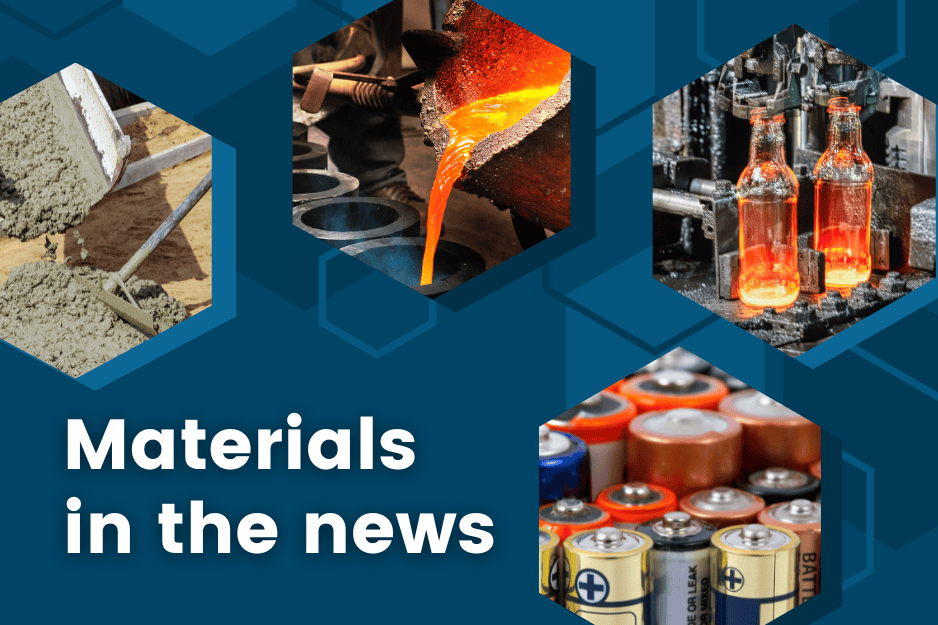
[Image above] Credit: ACerS
ENERGY
Engineers slash iridium use in electrolyzer catalyst by 80%
Rice University researchers developed an iridium-stabilized ruthenium oxide catalyst that uses just one-sixth as much iridium as conventional proton exchange membrane water electrolyzers, a key technology for generating green hydrogen from water. Their catalyst also maintains industrial-level performance for more than 1,500 hours of continuous operation.
New observation method improves outlook for lithium metal battery
Stanford University researchers added a step to the X-ray analysis process known as X-ray photoelectron spectroscopy: they flash freezed the battery cells before exposing them to the X-rays. This step allowed the researchers to gain more accurate insights into battery chemistry and longevity.
The evolution of data center cooling: From water to emerging technologies
Energy transactional attorneys Ram Sunkara and Joshua Belcher, along with corporate attorneys Blaine Remmick and Nikolai Hood, co-authored an article in Power Magazine on how data center cooling is shifting from traditional air and water systems to more sustainable, high‑efficiency approaches.
ENVIRONMENT
Scientists discover clean and green way to recycle Teflon
Researchers from Newcastle University and the University of Birmingham developed a clean and energy-efficient way to recycle Teflon. Their process breaks the strong carbon–fluorine bonds in Teflon and converts it into sodium fluoride, which is used in fluoride toothpastes and added to drinking water.
New materials make high-performance membranes the filters of the future
In a series of papers, Princeton University researchers demonstrated how membranes made from MXenes show promise when separating ions and other compounds from complex solutions.
MANUFACTURING
Metamaterials can stifle vibrations with intentional complexity
Researchers led by the University of Michigan and Air Force Research Laboratory showed how to 3D print intricate tubes that can use their complex structure to stymie vibrations.
Researchers identify strength-limiting defects in 3D-printed ceramics
Researchers from Montanuniversität Leoben in Austria and the Fraunhofer Institute for Ceramic Technologies and Systems in Germany published a detailed study identifying and classifying strength-limiting defects in additively manufactured ceramics.
OTHER STORIES
Scientists create world’s hottest engine
Researchers led by King’s College London created the world’s hottest engine running at temperatures above those reached in the sun’s core. The engine is a very small, microscopic particle suspended at a low pressure using electrical fields.
Glass network engineering of yellow-emitting glass-ceramics for full-spectrum lighting
Researchers from China Fujian Normal University and Hangzhou Dianzi University engineered Ba2Sc2B4O11:Ce3+ glass-ceramics to emit bright yellow light centered at 540 nm—perfectly matching full-spectrum lighting requirements.
Japanese scientists unveil a quantum battery that defies energy loss
Scientists from the RIKEN Center for Quantum Computing and Huazhong University of Science and Technology carried out a theoretical study showing how a “topological quantum battery” could be efficiently designed. This innovative concept uses the topological characteristics of photonic waveguides and the quantum behavior of two-level atoms to store and transfer energy.
Author
Lisa McDonald
CTT Categories
- Weekly Column: “Other materials”
Related Posts
Other materials stories that may be of interest for December 10, 2025
December 10, 2025
Other materials stories that may be of interest for December 3, 2025
December 3, 2025
Other materials stories that may be of interest for November 26, 2025
November 26, 2025